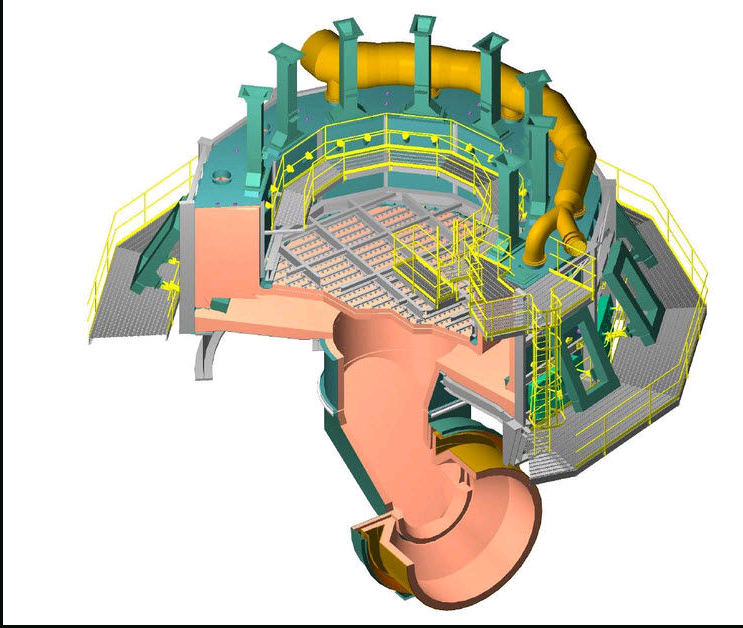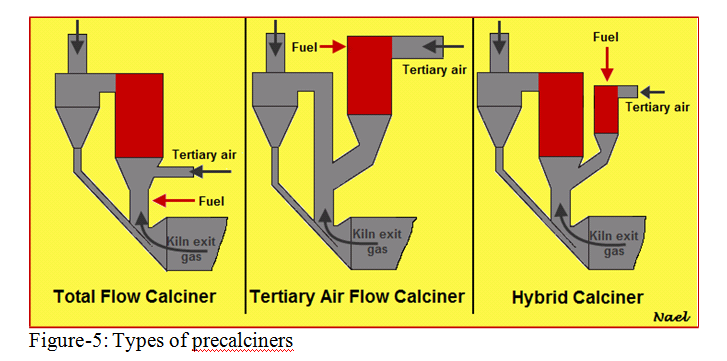Contents
click here to Download the Most Important 13 Books in Cement Industry
click here to Download the Most Important 13 Books in Cement Industry
What is the basic principle in classifying precalciners?

The vast diversity of precalciner systems makes their classification difficult. In particular, the design differences include: swirling or non-swirling flow, extended riser duct systems or separate combustion chamber, the system of supplying combustion air (separate duct or through the kiln), number of stages, and number of strings. But since combustion in precalciners is the most
important process, it is appropriate to review the three basic types of precalciners (figure-5) from this standpoint. These types are:
- Total flow precalciner: In total flow precalciners, combustion takes place in a mixture of kiln exit gases and tertiary air. Combustion therefore starts in gases with about 10% to 14% oxygen and ends in about 1% to 3% oxygen. Raw meal from the preheater is fed into the bottom of the precalciner and is conveyed through the precalciner to the lowest stage cyclone by the precalciner gases. During this time, fuel combustion and heat transfer to the raw material are occurring.
- Tertiary air flow precalciner: In tertiary air flow precalciners, combustion takes place in air flow. In other words, it starts in gases with 21% oxygen and ends in about 1 to 3% oxygen. Raw meal from the preheater is fed into the precalciner at the level of a burner end and is conveyed to the bottom stage cyclone.
- Hybrid precalciner: Hybrid precalciners are essentially a combination of the total flow and tertiary air flow precalciners. In hybrid precalciners, combustion starts in tertiary air with 21% oxygen, as in tertiary air flow precalciners, but is completed in a mixture of kiln off-gas and tertiary air, similar to total flow precalciners.

click here to Download the Most Important 13 Books in Cement Industry
click here to Download the Most Important 13 Books in Cement Industry